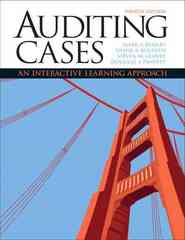Answered step by step
Verified Expert Solution
Question
1 Approved Answer
1. Why is the DCF model better in M&A analysis (page 586)? Please pay special attention to Tables 1, 2, & 3. 2. What is
1. Why is the DCF model better in M&A analysis (page 586)? Please pay special attention to Tables 1, 2, & 3.
2. What is Free Cash Flow (FCF) used in the model and how do we arrive at FCF?
3. Are there other models that an analyst may use to determine value?
4. What are they and when would one use these in place of a DCF model?



















Step by Step Solution
There are 3 Steps involved in it
Step: 1

Get Instant Access with AI-Powered Solutions
See step-by-step solutions with expert insights and AI powered tools for academic success
Step: 2

Step: 3

Ace Your Homework with AI
Get the answers you need in no time with our AI-driven, step-by-step assistance
Get Started


